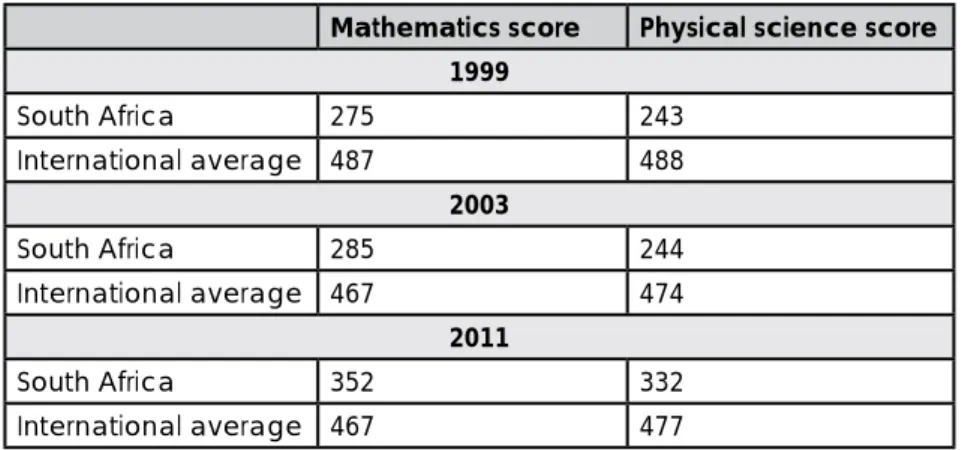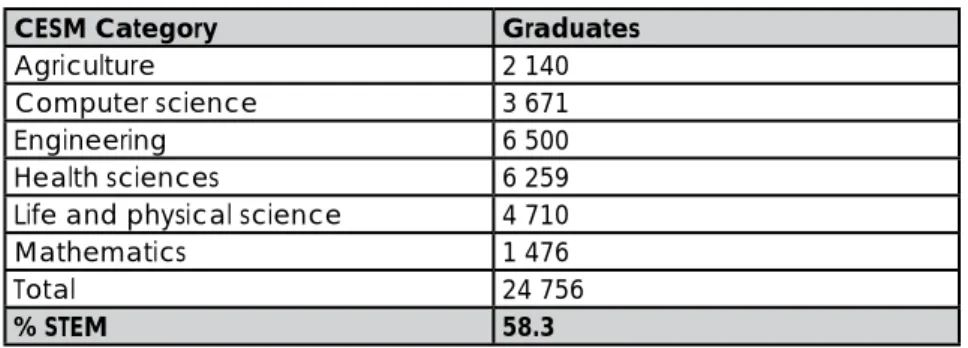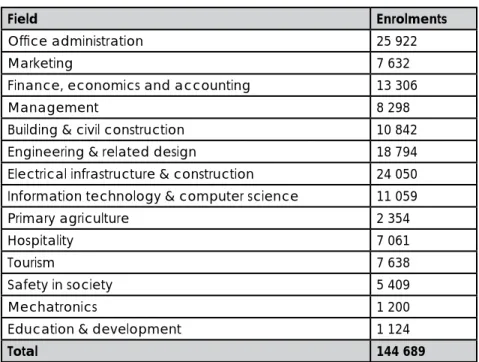The main body of the report begins with Chapter 2, which provides a detailed account of the development of innovation policy through its three phases since 1945: the 'linear model'; the. The aim of the analysis is to examine how the idea of an innovation system has been considered in these different statements - the Program for Reconstruction and Development (RPR); growth, recruitment and redeployment (GEAR) strategy; Accelerated and Shared Growth Strategy (AsgiSA); Joint Priority Skills Acquisition Initiative (JI-PSA); Biotechnology Strategy; nanotechnology strategy; National Research and Development Strategy; Ten-year innovation plan; Industrial Policy Action Plan (IPAP);. The discussion of the research and innovation environment also covers knowledge infrastructure, including science and technology parks and centers of competence (CoC).
From the dawn of democracy to the end of the NDP in 2030 is a critical time for South Africa and the country is now halfway through that period. An assessment of the regional determinants and active links should be carried out per region. Most importantly, this report follows the publication of the National Planning Commission (NPC) national diagnosis and the adoption of the subsequent National Development Plan (NDP) as government policy.
The aim of the analysis is to examine how the idea of the innovation system is included in these different statements.
This assessment follows two important systemic reviews: the 2007 Organization for Economic Co-operation and Development (OECD) South African Innovation Policy Review and the 2012 Ministerial Review of the STI Environment. The second is the need for a detailed analysis of the STI system for use by decision-makers. It follows an innovative systemic approach that takes into account the role of systemic actors and the way they interact over time and in context.
Development and niche are important themes throughout the SA STI Policy Framework Report after 1994. The next section, Chapter 4, provides quantitative evidence on the inputs to the innovation system and the outputs and outcomes arising from the innovation system. The development of scientific council powers is examined, followed by a discussion of the innovation activities of companies and the ways in which the research capabilities of universities are supported.
The chapter concludes with a consideration of the key elements of a successful NSI and the strengths and weaknesses of the South African NSI.
- Taking stock and moving forward
- Innovation and innovation systems
- The well-functioning innovation system
- The big picture
- The innovation system approach in South Africa
Clearly, there is a need to create a common understanding of innovation and the NSI that applies to this country, and use this as a tool to interrogate the role of the NSI in the NDP. To get some sense of the validity of such a model in the South African setting, it is useful to examine the results of the production. The concept of the innovation gap (DST, 2002; DST, 2008; Kaplan, 2008; Pouris, 2008) is widely mentioned by the DST, as well as the Technology Innovation Agency (TIA), the National Intellectual Property Management Office (NIPMO) and the Council for Scientific and Industrial Research (CSIR)4.
This third phase develops in the context of the 2008 global financial crisis, the solution of which is still unknown. Evidence of this can be found in the UK innovation strategy which uncritically acknowledges the role of the federal government in US innovation activities. How does one relate these success stories to the nature of the innovation systems where they originated.
The R&D strategy also encouraged the transfer of CSIR from dti to DST.
- The innovation system in national policy
- Specifi c innovation policy initiatives
- The NSI as a learning system
- Other government initiatives
- Presidential programme of action reviews
- Concluding remarks
- Introduction
- The skills pipeline
- The inputs to R&D
- Research output
- Research focus and concentration
- Citation of research and career incentives
- Innovation outputs
- Technology balance of payments
- Concluding remarks
The plan also recognized that while the country's S&T was advancing, there was still a huge gap between South Africa and knowledge-driven economies – WEF for 'innovation-driven' economies such as Korea, Finland, Singapore, Sweden, Germany and the US. Instead, nothing happened and the subsequent TYIP appears to have taken no account whatsoever of the OECD's views. The most recent assessment of the NSI is the Ministerial Review Committee report on the STI landscape in South Africa, published in May 2012.
In their critique of the Ministerial Review Committee report, Walwyn and Hagendijk (2012) noted that resolving the apparently low profile of innovation policy within the Cabinet, the weakness of the DWT in government, and the general lack of an innovation culture within the state and society, would demand strategies such as policy coherence with other government initiatives (such as the NDP). Regarding the relationship between the MRD-SA and STI policies, one of the MRD-SA's objectives is to ensure that South Africa is placed in the top 10% of comparable countries on the various technology and innovation indices. Business, both established and emerging, was largely excluded from the conception and coordination of the NSI.
From 2008, with the abolition of the three-tier matriculation certificate (upper, standard and lower class), mathematical literacy or mathematics became a compulsory subject in the National Higher Certificate (NSC). According to the DBE, the performance of both males and females in mathematics and physical science has improved. FTE researchers in higher education have barely changed over seven years. The decline in business spending is immediately apparent in the sharp drop in FTE researchers since the peak in 2007/08.
This section considered the limited world of R&D through the lens of the Frascati Manual. Part of the answer comes from the trend analysis (Figure 4) in the number of articles co-authored with foreign researchers. 12 shows partial counts for South Africa and the World, as well as our share of the total.
In terms of plant cultivar registration, South Africa is among the 15 richest countries globally. These measures represent some of the many indicators used and commonly cited in the Report. South Africa needs to develop the ability to measure the value of investment in innovation-related processes and returns.
Finally, and perhaps most importantly, the country must have indicators related to the NDP's imperatives.

- A map of the landscape
- Key actors in the NSI
- Key elements of a successful NSI
- Strengths and weaknesses of the NSI
Given the huge role of the service sector, it is not surprising that 25%. Part of the answer came in the form of SARChI, which was modeled closely after the Canadian Research Chairs Program. SARChI is one of the most important interventions in higher education institutions, which, like many other interventions, must recognize reality and compete with other needs.
One of the ways the DST is trying to address what it sees as the 'innovation gap'. The Ministerial Review has made some specific proposals regarding new models for the governance of the NSI in the form of a National Research and Innovation Council (NCRI), which have merit. In such studies, the relationship problems between the different participants are an important part of the learning process.
Most of the case studies reveal that even when the research offers commercial potential, the success rate is limited by factors related to the interrelationships between the participants in the process. As already mentioned, a large number of students and staff from Africa are active in innovation system institutions. In the latter case, the French industry-led Futuris program focused on redirecting their NSI was specifically mentioned.
In terms of IEI, which is the ratio of outputs to inputs, South Africa is ranked 22nd in SSA (out of 31 countries) and 116th out of 141 countries, highlighting the deficiency in NSI. It is considered one of the most important aspects of NSI, especially in developing countries. Although these aspects are not directly part of the NSI, they are all important factors in the ecosystem.
In terms of the Innovation Efficiency Index (IEI), which is the ratio of outputs to outputs, South Africa ranks 22nd in SSA (out of 31 countries) and 116th out of 141 countries, highlighting a gap in NSI. One of the OECD Review's most detailed comments was in noting South Africa's “remarkable achievement.

Key fi ndings and recommendations
The need to create a common understanding of innovation and the NSI applicable to South Africa is essential before interrogating the role of the NSI in the NDP. The NDP's goals underscore the World Bank's view of innovation by emphasizing the need for the NSI to meet the needs of society. This has resulted in the production of a workforce that is not sufficiently aligned with the needs of the NSI.
These measures represent some of the many indicators commonly used and cited in the report. There is a need to measure the value of the investment in innovation-related processes and the return. The OECD Review (2007) made many relevant observations, one of which was that there was a lack of understanding of the broader concept of innovation.
In terms of the Higher Education and Training pillar, it is notable that South Africa receives a score of 143 for the “Quality of Mathematics and Science Education” and 140 for the “Quality of the Education System”. Although such aspects are not directly part of the NSI, they are all important factors in the ecosystem. The value of such studies is underestimated as they are critical in providing guidance to support NSI.
Main results of the South African Innovation Survey 2005: a survey conducted by CeSTII on behalf of DST. Dawn of the African Century "A Nation at Work with Science and Technology for a Better Future". Department of Arts, Culture, Science and Technology, Pretoria. - preliminary assessment of the impact of research programs:. experience of the 7th framework program of the European Union.
Employment composition and affirmative action programs of science councils in South Africa. Too many actions, too few priorities: Commentary on the ministerial review of the STI landscape.








